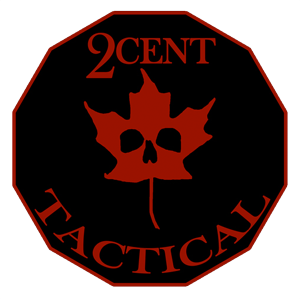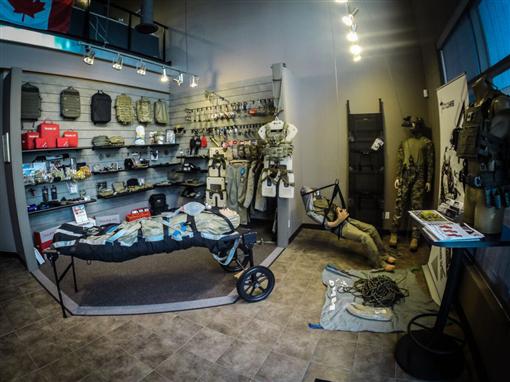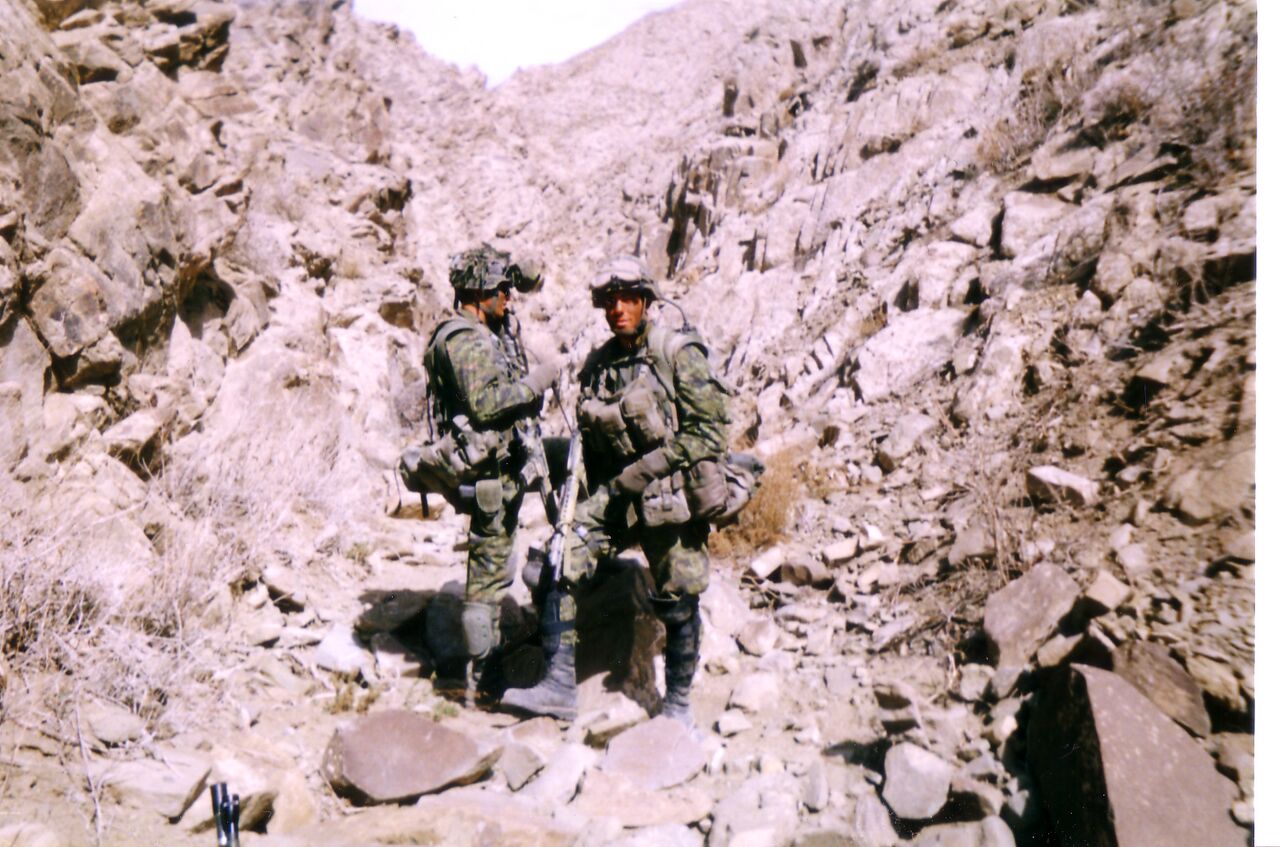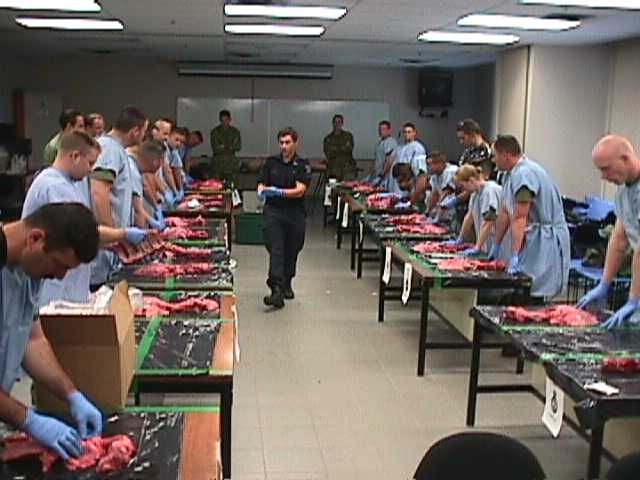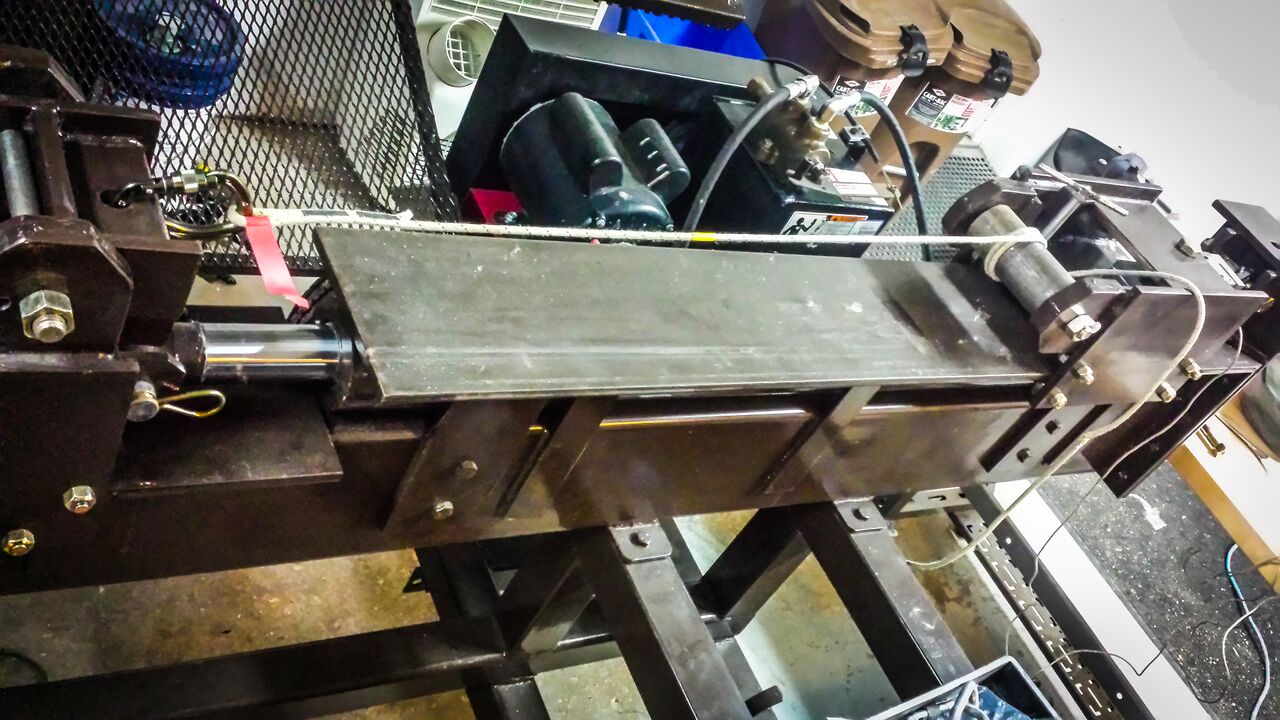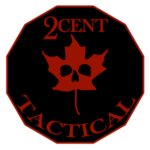CTOMS
http://ctoms.ca/
To start things off, Chris, why don’t you tell the readers a little bit about yourself and how you came to found CTOMS?
My background is military. I joined the Army straight out of high school in the early 90’s spending the majority of it in 3 PPCLI. In an effort to improve my soldier skills, as well as long term planning for a potential transition to Air Force Pararescue, I attended EMT-A school evenings and weekends. In February 2002 I deployed to Afghanistan where I ended up providing medical treatment to my platoon mates after the Tarnak Farm incident. The event put me in a position where I felt that, even despite my efforts to gain additional medical training, I was ill equipped and not properly trained for the situations I was being put in. That event was the catalyst that motivated me to initiate what would eventually become the TCCC (Tactical Combat Casualty Care) Course in the CAF.
After the Pilot TCCC Course in summer 2003, I transferred to the Air Force and became a SAR Tech. However, my passion remained in ‘tactical medicine’. With the help of Craig Keller, who was a Tactical Paramedic with Edmonton EMS, and my wife, Allyson Cruickshank, who was attending University taking business, we incorporated CTOMS in April of 2005 with the intent to offer tactical medicine training to law enforcement agencies. The hobby business ended up getting quite busy and placed additional demands on my time. I had to make the hardest decision of my life and released from the military in 2006 to pursue CTOMS full time.
In retrospect I see now that what was a huge question and risk for me would eventually create a vehicle that allowed me to influence saving more lives than I probably ever could have as a SAR Tech.
Did you always know that you were going to start your own business?
It was never part of my master plan. It was something that just ended up happening.
What was the catalyst that caused you to go from retail and training into designing your own gear like your TRACEâ„¢
System?
We started as a training company, and we still consider ourselves a training company first. The distribution of products came after we realized there was requirement for unique equipment that wasn’t readily available. We always say, we don’t teach a product because we sell it, but rather we sell a product because it is a best of breed based on performance validated in training and in the field by end users, often our students. Eventually some of the ‘best of breed’ products weren’t available due to Health Canada licensing, or they simply didn’t exist. That’s when we started working with other companies to create things like our Surgical Airway Set that was used by Med Tech’s in Afghanistan and is now adopted by Alberta Health.
Product development started to grow. First it was nylon, like pouches, packs and belts. We had designed a pouch for the initial TCCC Course so we naturally evolved on that. As odd as it sounds, I have been sewing since I was a child, so I was able to create the prototypes and then have them professionally manufactured.
A lot of the product designs would be influenced from previous experiences. I would incorporate features from rescue diving, or parachute rigging into products that didn’t have a direct correlation, but similar functional requirements. TRACE™ Systems came about due to mountaineering and rope rescue experience. The premise was that egress or casualty evacuation from height or confined space required equipment and training that was weight, bulk and specialty training prohibitive. We wanted to solve all that, so the question became how safe, small and simple can we go? I sought counsel with a rope work equipment design acquaintance, and TRACE™Systems was born.
You really go to the extremes when testing your own gear to ensure it works the best it can and as it was advertised to your clients. Could you run us through how you came up with some of your testing rigs and why this is important for you?
For TRACE™ Systems in particular, it was important for us to ensure we were selling a safe product that wasn’t going to get anyone hurt. Because the system is so different than traditional rope systems, we had to ensure proper end user training, which is why we came up with the online training package that comes with each kit. There are no industry standards for micro-rope systems so we decided in the spirit of proper due diligence, to create our own, reproducible tests, in the most extreme circumstances and then publish the test results for end users. We have nothing to hide with the system, which then clearly defined the capabilities and limitations of it.
We had a custom built slow pull machine made to measure slippage forces and break strengths of the products under slow application of force. Then we constructed a drop tower in order to test the products in dynamic force application. Both of those give us the ability to test the systems in controlled, simulated real world applications so we can clearly define the safe working parameters.
When we initially started the testing on TRACE™ Systems, we were actually surprised at how well it performed. Based on early testing, it expanded the applications and the capability. While I cautiously say this as it can easily change overnight, right now, to the best of my knowledge, we are the smallest and lightest comprehensive capability micro-rope system in the world, with extensive test data to support its safety.We also like to put the medical products to the test as well. These also get vigorously tested in as realistic of simulations as you can imagine. It’s important for us to ensure that we not only have experience in a product so we can speak about it from that experience, but also to ensure that it is of a quality worth our recommendation.
Your blog post on how feminine hygiene products are not good at stopping bleeding was very eye opening for me. This was something that was taught to me as a viable option through a course fairly recently and quite a few times over the years. Through your instruction of Law Enforcement, Military, and Civilian personnel how often do these misconceptions come up and are there any other ones you hear often?
Misconceptions are less common than honest ignorance, and I don’t mean that in a negative way. Honestly, most students simply don’t have information as opposed to having wrong information. I think first aid training has become so rooted in classroom delivery and clinical doctor oversight that it has lost much of its field practicality, at least regarding serious injuries and in particular penetrating trauma.
After teaching thousands of students in advanced medical care, especially with high fidelity pathophysiological training aids, patterns and trends start to appear. Add to that maintaining a finger on the pulse of the industry, both online, through the network and at conferences like SOMA. With a critical eye, and a desire to improve and innovate, those patterns can then be used to note gaps, common errors, human nature trends, common misconceptions, etc. that exist.
Some of the other big ones are regarding tourniquets. High and tight is often taught contrary to data stating best practice is otherwise. The excuse given is that “we teach to the lowest common denominator as stress will affect performance and in Care Under Fire, we don’t want to try to guess where the wound is,†so they apply magic bullet theory (bullet enters the toe and travels up the leg and transects the femoral artery high in the thigh). A real case study exists of an amputated finger where a tourniquet was applied high on the arm. No requirement for a tourniquet at all there, but people fall back on their training. There is another of two tourniquets placed high on both thighs where there were no wounds at all on the legs. Probably only blood on the pants from elsewhere. Having said that, a tourniquet in place when it is not needed, is safer than no tourniquet when one is needed. We just need to be smart about how we teach.
In contrast, we don’t teach to a ‘lowest common denominator’, but rather to a ‘gold standard’ and apply caveats as required. You can assume your students are stupid or intelligent, and we will always assume they are intelligent. If you are in Care Under Fire and there is bleeding indicative of a tourniquet but you are uncertain exactly where the wound is, then yes go high and tight. But once things settle, someone trained to do so needs to reduce that tourniquet soonest if it’s significantly higher than the actual wound.
Some EMS agencies still have policies to release a tourniquet intermittently and periodically, which should not be done. The Province of Quebec legislation, as I understand it, prohibits the use of a tourniquet until two bandages have failed, which is an awful lot of wasted blood. Some agencies have banned wound packing. Even the CoTCCC has endorsed chest seals with a valve. Given perfect circumstances, a valve may function. However the reality is the vast majority of penetrating chest wounds self-seal. That is just the nature of GSW’s and tissue planes. Meaning the best valve in the world won’t work, and only give a false sense of security to the under trained provider. The standard video used by TCCC courses of the sucking chest wound is actually a 40mm grenade hole in the chest that didn’t explode because of the close proximity of the hit. It makes everyone think that all chest wounds are huge holes like that, and it’s not true.
With your previous background as a Search and Rescue Technician in the Canadian Forces,do you find we offer our guys adequate emergency medical training?
Yes and no, and realize I have an admittedly bias perspective. All trades in the CAF charged with professional field health care are given great training, and the people themselves are second to none. There is always room for improvement in process and content. For example, I believe the SAR Tech trade could use significant improvement in longer term, austere field care training. Currently they are given the same course as an ambulance attendant, however their operational environment is significantly different. Programs should consistently be critically evaluated for appropriateness relative to environment and casualty demographic. For example, a SAR Tech response time is likely never less than half an hour and probably closer to 2 to 5+ hours, and then in their care from anywhere between 1 hour to multiple days. That is what should drive scope of practice and training focus, not an off the shelf civilian training program.
To be honest, I am not familiar enough with the current training for CAF Med Techs. However I do know that the specialized training that was implemented during the Afghanistan war has been discontinued, largely due to budget restraints. That unfortunately puts at least the first, if not the first two rotations in any future deployment at a significant disadvantage as it would likely take 1 year to ramp up that type of training again.
Do you think that the military and police should offer reimbursement if their members were to undergo training on their own time?
In a word no, and that is because training that an agency pays for should be vetted and approved by that agency. Maybe the better answer is yes, but only from an approved list. There is too much varying quality in ‘tactical medical’ training offered in open industry. Someone can take the worst course available where they teach you to pour honey in a wound, and tell their boss it’s the greatest course in the world because they have no other frame of reference to gauge it by.
Some agencies have made great strides in implementation of medical programs, but many still have a lot of work to do. The problem that I see is the approach. Many agencies will purchase tourniquets for their officers and issue them out without any training on them. I doubt they would do the same with firearms, hand cuffs, cars, etc.
The other thing we are starting to see is internal development of courses in law enforcement agencies. Again, my perspective is bias, however law enforcement officers generally aren’t up to date subject matter experts in medicine, especially given the time allotment and budget to produce such programs. I would argue they could get a far superior, more sustainable and more cost effective product more efficiently by outsourcing to experts whose sole focus everyday is tactical medicine.
Has our recent time in various conflicts overseas brought a positive change in the way the military deals with emergency medicine?
It did, but the digression was faster and deeper than I expected it to be. The reality is, and this is an established historical pattern, the hard lessons learned are all too often forgotten, not because of incompetence, but because of budget cuts post conflict. There are amazing people with incredible experience that come out of these conflicts. However many get out of the military and the ones that stay and are keen to maintain the lessons learned will struggle with a lack of support and budget from the system. The U.S. has certainly succeeded in implementing corporate knowledge retention in their systems and process. There are a handful of people that have done a truly amazing job to prevent the de-evolution in the U.S. system. Unfortunately, there is simply not enough people or budget in the CAF to ensure a comparable official, policy based knowledge retention. What I see left is only residual and primarily based on individual efforts rather than doctrinal restructuring.
I continually see people assembling IFAKs with gear they don’t know how to use like chest decompression needles. What are your thoughts on this?
It’s a personal call. There are no requirements for prescription for these devices in Canada as there are in the U.S. But just because you can purchase it, doesn’t mean you can legally do the procedure it is intended for, like decompressing a chest. Invasive procedures are delegated medical acts, meaning they can only be done by a trained professional under the license of a doctor. And you’re not likely going to perform these procedures on yourself. Although telling someone to go cric themselves can be funny if delivered timely to the right audience. The argument is often made, laws be damned, if my friend/family/I require it, it’s going to happen. Fair enough, then it becomes a question of training.
What the CAF found out after allowing non-medic, TCCC trained soldiers to do needle decompressions, was that the procedure was done far more frequently than it should have been. That raises the argument of risk vs. benefit, as the more invasive the procedure, often the more risk. The less training, the more risk too. It’s a legal medical area of debate. I would guess that if a procedure was ever done by a non-professional and resulted in doing more harm and a law suit, it would be for a court to decide. There are Good Samaritan laws in every province so it would be a judgement on the balance of good intention vs. being too cavalier against that law. Well outside of my arcs to comment further.
One of our writers recently had his Mosin Nagant explode midway through cocking the bolt. Parts of the casing and the bolt were lodged in his chest and burnt his hands fairly badly. The range he belongs to is a good distance from civilization and no one had first aid supplies on them due to a lapse in judgment. Do you recommend aid kits in both vehicles and in their range gear?
Of course. You can never go wrong having medical kit pre-staged. The key is to not become dependent on it. You should be able to manage MAR or ABC with only your hands and brain. Become proficient with nothing, then anything more is gravy. I carry gloves, a tourniquet and hemostatic dressing in my day bag. Nothing more. Sometimes less. But I am an extreme minimalist.
I would like to thank you for taking time out of your schedule to do this interview with us. I would also like to congratulate you on 10 years of being in business and I hope that you have at least 10 more years to come. The good you do by training up soldiers, law enforcement, and regular civilians is having a positive impact on saving lives, including how your gear has actually ensured people who have faced real life danger made it home to their families. Is there a piece of departing wisdom you would like to pass on to our readers?
Thanks very much for the kind words and this opportunity.
As for advice, this is some of the most important things I’ve learned. Be a critical thinker. Be curious. Question everything. Don’t rely on gear, rely on yourself. That means always seek to better yourself. Don’t settle. Demand high quality training and product. Always be prepared. Always be a leader. And when everything goes to hell, leave nothing to chance and control the chaos!
